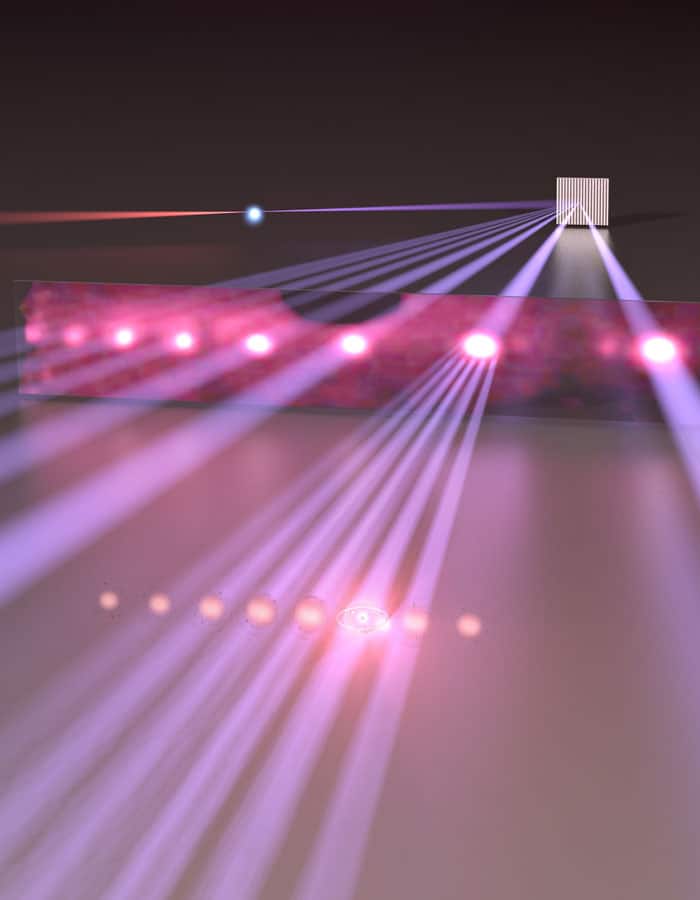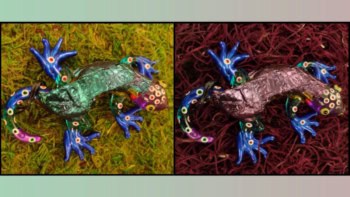
A lens for extreme-ultraviolet (XUV) light has been created by physicists in Germany. Using a jet of gaseous helium, Bernd Schütte and colleagues at the Max Born Institute could focus XUV beams and separate the light into its constituent wavelengths. The device overcomes a key challenge facing those trying to develop XUV lenses, which is that most materials are highly absorptive of XUV light.
Lenses and prisms direct and focus light using refraction – whereby light bends as passes between two different media (such as air and glass). Devices that can focus XUV beams, however, have been notoriously difficult to develop because solids, liquids and even gases tend to be opaque to XUV light. Indeed, XUV beams tend to be created in vacuum to avoid absorption by air.
There are a growing number of XUV sources worldwide and beams are becoming increasingly useful for semiconductor lithography and fundamental research into the structure of matter. As a result, there is a real need for practical XUV lenses.
Density gradient
Instead of using highly-absorbing solid or liquid lenses, Schütte’s made their device from a jet of hydrogen gas that is fired across a beam of UV light. The density of the gas is varied in the direction that is perpendicular to both the jet and the light beam.
The helium atoms have a resonant frequency close to that of XUV light. This means that most of the beam is deflected away from the jet, resulting in low absorption. By fine-tuning the density gradient of the jet, the team can adjust the focal length of their lens, allowing it to focus XUV beams down to spot sizes of nanometres.

Frequency comb reaches extreme ultraviolet
Since the atoms in the lens are continually replenished, any damage caused by XUV exposure is essentially repaired immediately — an advantage that is not possible in XUV mirrors. In addition, the angle at which XUV light is deflected from helium is highly dependent on the wavelength of the light. This means that the jet can be used as a prism; separating XUV light into its constituent wavelengths.
The team’s gaseous lens could have a range of practical applications including microscopes that can monitor changes in the structures of biomolecules over short timescales. The lens could also be used to create semiconductor devices with smaller and more intricate features than possible today.
Schütte and colleagues are now working on implementing a range of refractive optics techniques using gas jets. They also point-out that the technique could be adapted for shorter-wavelength light by replacing the gaseous jet with a plasma of highly-charged ions and electrons.
The research is described in Nature.



